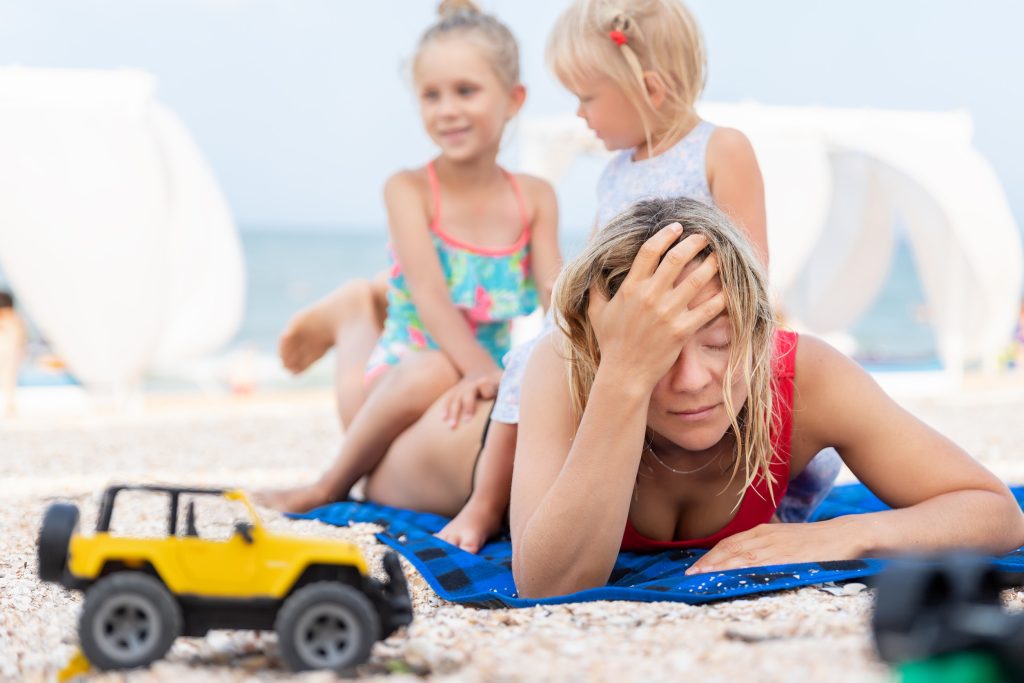
Summer is packed with things parents do expect to watch for: sunburn, bug bites, and pool safety top most lists. But there’s one summer danger that creeps in slowly, quietly, and often goes unnoticed until a child is already in trouble—heat exhaustion. Unlike a scraped knee or obvious sunburn, the signs of this summer danger can be subtle, especially in kids who are too busy playing to notice how they feel. When left unchecked, it can escalate into something much more serious, like heatstroke. Understanding this hidden threat can help you keep your child safe before things reach a boiling point.
1. Kids Don’t Always Know When They’re Overheating
Children are notorious for pushing through discomfort just to keep playing. They may not recognize when their bodies are overheating or feel too distracted to say something. Heat exhaustion symptoms in children can include irritability, dizziness, headache, or nausea—things that are easy to dismiss as minor issues. Unlike adults, kids won’t always stop and take a break when their bodies need it. That’s why it’s crucial for parents to step in and monitor physical signs of this summer danger before they become dangerous.
2. Dehydration Happens Faster Than You Think
In hot weather, kids lose fluids rapidly through sweat, even if they don’t appear drenched. Many children don’t feel thirsty until they’re already dehydrated, making it easy to fall behind on fluid intake. This is especially true during high-energy activities like biking, running, or playing sports. Make it a habit to offer water frequently, not just when your child asks for it. Staying ahead of dehydration is one of the easiest ways to prevent a summer danger from catching you off guard.
3. Symptoms Can Look Like “Just Being Tired”
One of the reasons this summer danger gets overlooked is because it often looks like simple fatigue. A child may act sluggish, complain of a tummy ache, or seem unusually cranky—none of which immediately scream “heat emergency.” But these early signs are your warning flag. If your child has been outside and is suddenly unusually quiet or out of sorts, it’s time to get them into the shade and rehydrated. Never assume “tired” is harmless in the heat without checking other symptoms.
4. Humidity Makes Everything Worse
High humidity makes it harder for the body to cool itself through sweat. That means even on a cloudy or breezy day, your child could be at higher risk for heat exhaustion if the air is thick with moisture. Parents often underestimate risk on days that don’t feel oppressively hot. Always check the heat index—not just the temperature—when planning outdoor activities. When the humidity is high, build in extra rest time and prioritize shade breaks.
5. Certain Clothes Trap Heat
That adorable costume or character tee might be great for pictures, but if it’s made of thick, synthetic fabric, it could be keeping heat in. Breathable, lightweight clothing made from natural fibers like cotton is a better choice for summer play. Avoid dark colors, which absorb more heat, and always opt for a wide-brimmed hat when possible. Proper clothing helps your child’s body stay cool and avoid the slow buildup of heat exhaustion. The right outfit can be just as important as sunscreen when it comes to avoiding a summer danger.
6. Heat Exhaustion Can Sneak Up Indoors Too
It’s not just playgrounds and parks where heat exhaustion lurks. Homes without proper ventilation, cars sitting in the sun, or indoor areas without fans or AC can get dangerously hot in a short time. Even a shaded garage or stuffy bedroom can trap heat and affect your child more than you realize. Always check indoor temps, especially during nap time or quiet play sessions. Don’t assume your child is safe just because they’re not outside.
7. Parents Often Miss the Danger Until It’s an Emergency
Perhaps the biggest risk with heat exhaustion in children is that it escalates before anyone realizes what’s happening. By the time a child is vomiting or passing out, you’re dealing with a medical emergency that may require hospitalization. That’s why prevention and early recognition are everything. Knowing what this summer danger looks like—and acting quickly—can stop it from becoming something far more serious. Don’t wait for dramatic symptoms to take action.
Don’t Let Summer Fun Turn into a Heat Emergency
Heat exhaustion in children doesn’t get nearly enough attention, but it’s a risk that rises with every hot day, sports practice, or backyard play session. You don’t have to cancel the fun—just stay proactive. Offer water often, build in breaks, dress kids appropriately, and trust your instincts when something seems off. With a little awareness and a lot of hydration, you can keep summer fun and safe from this often overlooked summer danger.
Have you ever had a close call with heat exhaustion in your family? What helped you recognize the signs? Share your experience in the comments.
Read More:
Summer Fun on a Budget: 10 Ways to Beat the Heat for Cheap
15 Outdoor Adventures to Transform Your Kids’ Summer
The post The Summer Danger No One Talks About—Until It’s Too Late appeared first on Kids Ain't Cheap.







